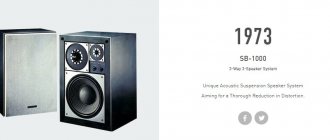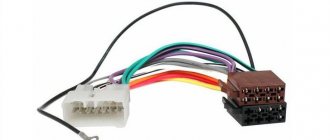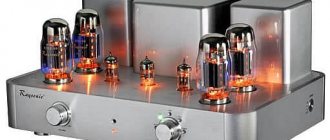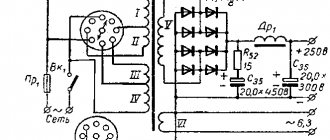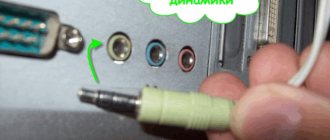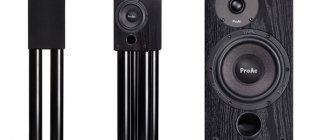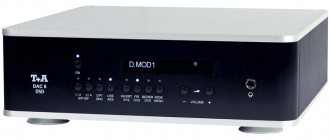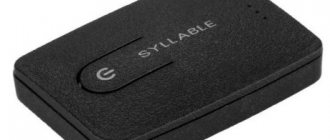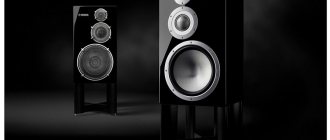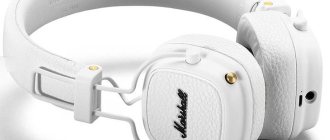Masterpieces of world speaker construction: the evolution of the three-way standard, the studio cult of JBL
The speakers we'll be discussing are known for setting a new industry standard in recording and, more recently, in home audio. This development by JBL became a significant part of the history of not only this company, but also the global recording industry, acoustic design of studios and, to some extent, the history of music.
We will talk about one of the most popular lines of studio monitors in the entire history of electroacoustics. Evolutionary continuity in it can be traced from the late 60s to the present. In other words, a post about JBL 4310 monitors and developments created on their basis.
It was thanks to the solutions implemented in these speakers that by 1977, the overwhelming number of recording studios in the world used JBL studio monitors. Moreover, according to a Billboard survey, by the end of the 70s, the total number of studios using JBL equipment exceeded the total number of studios using equipment from all other brands.
The need for a new form factor
It all started with the dimensions.
By the end of the 60s, the popularity of many genres of rock and pop music was growing. In turn, this required expanding the capabilities of recording equipment, increasing the number of studios and improving the quality of recordings. The capabilities of mixers and their overall dimensions began to grow. In addition, many new devices began to appear in studios, which also took up a lot of space in the late 60s. And as a result of this whole chain, there was less and less space left for monitors.
Thus, floor-standing studio monitors, which have been common since the late 50s, should have become a thing of the past, while fidelity of reproduction, which, as many know, largely depends on the internal volume of the speakers, should have remained at the same level, and ideally to become better.
JBL decided that they could realize this seemingly paradoxical task, and in 1968 the development of a new speaker began. It is known that the leading developer of the system was engineer Ed May, who authored the concept and made the main technical decisions.
Also, Bart Lokanti made a great contribution to the creation of the system, who was engaged in experimental work and measurements, for some computer modeling was used, which was extremely unusual and innovative for the late 60s. Overall project management was entrusted to James Barthell. Designer Arnold Wolf was responsible for the appearance of the new system.
It was thanks to these key figures in the development team that, within one busy and difficult year, it was possible to realize, without exaggeration, a revolutionary speaker, the JBL 4310.
It should also be noted that an impressive part of the research to create a new speaker was carried out throughout the 60s. A lot of preparatory work went into the development of the floor-standing JBL 4320 Studio Monitor, which enjoyed serious success in the United States throughout much of the 60s.
“dimensionless” and merciless JBL 4320 Studio Monitor
4310 - studio bestseller
We can say that the mass shelf form factor for studios appeared exactly then and was initially three-way. The developers quickly realized that the dimensions of the speaker had to be smaller in order to place it on the sill of a studio window, on a cantilever bridge, or hang it from the ceiling. It is important to maintain a wide frequency range and low distortion.
JBL 4310 in comparison with typical monitors of its time - early 70s
The result of many months of “intensive” development of a new acoustic system were speakers that, with a stretch, can be called compact by modern standards. Their overall dimensions were 60 x 36 x 30 cm, and a pair of new monitors weighed 23 kg.
For 1969, they were one of the champions in terms of weight and size characteristics in their power “category” (i.e., with 50 W of program power, with a sensitivity of 45 dB with an input power of 1 mW at 30 feet).
In general, the main characteristics of the monitors were as follows:
- Program power: 50 W;
- Frequency range: 45-15,000 Hz (+- 3 dB);
- Crossover frequencies: 1500 Hz, 7000 Hz;
- Nominal resistance 8 ohms;
- Harmonic distortion coefficient: up to 0.8% (1W, 1 kHz), up to 1.5% (100 Hz).
Despite the large (by modern standards) uneven frequency response (+-3 dB), this speaker has a fairly smooth graph. Also a characteristic feature was the extremely low SOI values at LF, which was uncharacteristic for acoustics of that time.
In many ways, this combination of sound and size characteristics was achieved thanks to the use of new speakers with increased stroke and polymer diffusers, which were superior to classic cellulose membranes. Such drivers were the LF 123A model, the LE5-2 midrange speaker and the LE20 dome tweeter.
LF driver, diagram from the documentation for the system
Almost all well-known sound engineers of that time noted that this particular system was optimal in terms of a combination of factors such as fidelity of reproduction, volume, frequency response uniformity, weight and size characteristics, and price.
A hit for studios goes into homes
By the early seventies, the system won not only the hearts of sound producers, but also audiophiles, who in those years, contrary to some modern ideas, highly valued monitor acoustics.
A later variant, called 4311, changed the tweeter, which was replaced with a smaller unit. Flat deflectors that did not live up to the developers' hopes were removed. Also, the HF emitter was raised into the acoustic plane of the LF driver, which in those years seemed a more logical solution. In this improved form, the model will exist along with the 4310 until the end of the 70s.
Appearance of the 4311
The interest of non-professionals was fueled by the high demand for monitors in studios, but it is quite clear that the design of the studio one scared away discerning aesthetes with its brutal, especially for the early 70s, appearance. 4311 did not leave indifferent among music lovers, but most of them wanted to see something more aesthetically pleasing as a source of their favorite music.
The 4310's popularity peaked when JBL became part of the Jervis Corporation, which was controlled by Sidney Harman. To introduce new approaches to promoting products in the consumer market, the latter appointed talented marketer Irving Stern. He, in turn, played tricks with the design team and turned the 4311 studio monitors into quite aesthetic designer speakers, which, by the way, did not lose any of their acoustic properties. The miracle acoustics for mere mortals was called L100.
L100
For the L100, the electrical circuit was simplified, eliminating attenuator control, and the acoustic design was optimized. In other words, they brought it into line with the ideas of the average user. Interestingly, the main characteristics of the device were not affected by this.
There were some innovations. In order to liven up the boring and rough design of monitors, Arnold Wolf proposed a raised grill. The fabric traditionally used in such cases was not very suitable for creating a three-dimensional relief.
After a couple of weeks of research, the developers turned their attention to elastic polyurethane foam as the lightest and most acoustically neutral material. So, according to Arnold Wolf, in the L100 he was the first to use a foam grill.
The results of the collaboration of designers, engineers and marketers can be assessed statistically. The L100 became the best-selling speaker system in the United States during the 1970s.
1982 - a new stage of evolution - JBL 4312
In the 80s, approaches to music changed once again; studio workers required higher volume, and, accordingly, the power and sensitivity of monitors.
Moreover, over the decade, the technical capabilities of sound reproducing equipment have increased significantly, and accordingly, the requirements for fidelity of reproduction have increased. The market and the recording industry were waiting for a new device from JBL, as relevant for the 80s as the JBL 4310 was in its time. And JBL engineers have done it once again. The new system appeared in 1982 - these were again shelf 3-way monitors, the shapes of which clearly resembled 4310.
The new AS was named 4312 and despite the fact that it was very similar to its evolutionary ancestor, it was fundamentally new. The new monitors received a set of characteristics that were relevant for that time:
- Program power: 100 W;
- Frequency range: 45 Hz -20 kHz, (+-3 dB);
- Sensitivity more than: 91 dB, 1 W, 1 m;
- Nominal resistance: 8 ohms;
- Crossover Separation: 1.5 kHz, 7 kHz.
Interestingly, the documentation for the device provided detailed data on frequency and nonlinear distortions. Looking at the presented graphs, you understand that many modern speakers (comparable in cost) do not reach the level of 25 years ago. This is probably why some modern manufacturers are not ready to provide detailed measurement results.
Jbl 4312 went through several reissues. Modifications that had a single acoustic design as a basis could differ in speakers and crossover element base. For example, the 4312, released in 1982, was equipped with classic cellulose and cellulose-fabric drivers, and the experimental versions of 4312 - A, B and BS received a metal dome tweeter (in the case of BS - titanium).
Second birth
In 2000, the last nostalgic series 4312 mk2 was released with new speakers and the old design and acoustic design.
She retained the titanium tweeter, which turned out to be more durable and has higher fidelity.
Characteristics of the updated system:
- Frequency range: 45 – 22000 Hz
- Sensitivity: 93 dB (2.83 V/m)
- Recommended amplifier power: 150 W
- Nominal impedance: 6 ohms
- Crossover frequency: 2000 Hz and 5000 Hz
- Speakers:
- LF: 300 mm (paper on fabric)
- MF: 125 mm (paper on fabric)
- HF: 25 mm (titanium)
- Finish options: grey, dark walnut, black
- Grille color: blue, black
- Dimensions (HxWxD): 597x368x298 mm
- Weight: 21.7 kg
LF driver
midrange driver
HF emitter
An interesting feature was the filter design, which has changed little since the 80s. Unlike many modern products, they did not skimp on the element base and ratings. As in the device from the 80s, the filters of the “restyling” version use non-polar capacitors designed for high voltage.
This year, at CES-2108, an updated version of the L100-L100 Classic was presented, which also went through many reissues.
It is known that engineer Chris Hagen, who created the now iconic L100T3 speaker in 1988, took part in the creation of the remake.
Bottom line
One can argue about which company and which engineer owns such inventions as the shelf form factor and three-way separation in monitor speakers.
One thing is clear to me: these two innovations really became widespread after they were used in JBL studio monitors. Today the 4310 may seem primitive and limited in features, but for its time it was almost flawless. Photo: www.audioheritage.org en.audiofanzine.com ldsound.ru roniker.ru www.troelsgravesen.dk
I highly recommend these information-rich resources to anyone interested in the topic of high-fidelity hardware.
Jeans
Our catalog contains many high-fidelity acoustic systems
JBL Studio Monitor 4312E review
JBL acoustic monitors are extremely popular both among professionals and among lovers of reliable sound reproduction. As for professionals, everything is clear here - in order to make a high-quality recording, the sound engineer in the studio must use speaker systems with the most neutral sound possible. This is precisely the quality of the JBL Studio Monitor series of acoustic monitors, which can be found in recording studios around the world. However, the fact that the JBL Monitor Series acoustic monitors have a lot of fans among ordinary fans is also not at all surprising. The monitors of the famous acoustic brand are valued by them for their high power, correctness in the transmission of timbres, the most accurate stereo image and other qualities that allow the JBL Monitor Series loudspeakers to reproduce sound without any “gag”, and exactly as the sound engineer intended. In addition, JBL acoustic monitors provide good sound performance when placed close to the listener. The latter circumstance makes them a real find for lovers of audio systems (built, among other things, on the basis of a personal computer with an external DAC or music server) designed for the most realistic playback of high-resolution recordings.
The JBL 4312E studio monitors can be called direct descendants of the legendary 4320 model, which was first introduced in 1968 and, without exaggeration, changed the entire professional recording industry. The JBL 4312E acoustic monitors, which were recently introduced to the general public, have already won the sympathy of lovers of accurate reproduction and music industry professionals.
The JBL 4312E woofer has a 300mm conical diaphragm coated with a special Aquaplus substance designed to reduce parasitic resonances and improve the internal damping of the cone. The special patented Differential Drive magnetic system, which uses a double voice coil and a double magnet with a push-pull configuration, allows for absolute control when moving the cone and effectively dissipates the heat generated during the operation of the speaker. This ensures deep and clear bass reproduction without distortion, even at maximum volume. The cast aluminum speaker basket also allows for efficient heat dissipation and is designed to allow air to flow freely when the cone returns.
The midrange driver of the new acoustic monitors is equipped with a 125 mm diaphragm made of polymer-coated cellulose. The 1-inch voice coil is wound on a special Kapton frame to provide smooth frequency response, low audio distortion and increased load carrying capacity for excellent dynamic performance even at maximum volume. A special speaker basket minimizes the air pressure created by the rear side of the diffuser, thereby minimizing sound distortion, and mid-range frequencies (and, in particular, the human voice) are transmitted with the highest naturalness.
The 25mm dome tweeter, made of an aluminum and magnesium alloy, is capable of reproducing sound at frequencies significantly higher than the upper frequency of human hearing. This allows the speakers to successfully reproduce SACD and other high-resolution audio formats. A special shallow horn and phase-equalizing cap allow for wide dispersion at high frequencies.
JBL 4312E speaker systems are supplied in mirrored pairs (a pair includes right and left speakers) to create an accurate and detailed sound stage, which, in fact, real high-quality acoustic monitors should have.
The unusually rigid speaker cabinets, equipped with internal ties, are made of 19 mm thick chipboard.
The speakers have a bass reflex design, with the ports located on the front panel, so they can be placed in close proximity to walls without any problems.
Another interesting feature of the JBL 4312E is the presence of mid and high frequency controls, which allow you to adjust the monitor parameters to specific acoustic conditions or individual listener preferences.
The JBL 4312E acoustic monitors have a nominal impedance of 6 ohms, a frequency response of 40 Hz to 40 kHz, and a high sensitivity of 93 dB. To work with them, it is recommended to use an amplifier with a power of up to 200 W.
Tweet
Like
The return of a classic JBL 4312M II
The catalogs of some outstanding brands contain iconic models that have been coveted by audiophiles for 30-40 years and are still sought out occasionally at auction. However, sometimes the past returns, although not in full size and scope.
As a result of the restructuring of the Harman concern, the Harman Consumer Group division, which includes JBL, was closed in the middle of last year. After a series of upheavals and transfers of developers from one division to another, it was announced earlier this year that by the end of June, production in Northridge would stop and be transferred entirely to Japan. Some were inclined to interpret this news, which also affected JBL Professional, in a negative way due to the loss of its “Made in USA” status. In America itself there was even talk that only a shadow of its former glory would remain of the brand. Be that as it may, all this is a cause for concern mainly among American audiophiles who are grieving over the loss of a national treasure and the legacy of James Lansing. What is more interesting for us is that Japan raised the fallen banner. And in honor of this event, in addition to the production of modern lines, it organized the production of famous old studio monitors, the originals of which are still in high demand among collectors and connoisseurs. So, before us, for the first time in Russia, is the first sign of the “new old” professional series - compact mini-monitors JBL 4312M II. And, starting to listen, we fervently hope that the first guest will definitely be followed by a continuation.
Compact speakers with the number 4312M II are nothing more than a miniature replica of the 4312 studio monitor, only exactly halved in size (and, of course, significantly reduced in weight). The mini-copy completely replicates the design of the original model. The 133 mm woofer is made exactly according to the technology used in the 4312 - it has an aluminum basket and a recognizable white paper diffuser. The same applies to the midrange driver - in shape and design it is the same as the original driver, only smaller. A difference from the 1982 model was the use of a titanium dome for reproducing high frequencies, made using new material processing technology in order to increase the strength of the membrane. All speakers are magnetically shielded. To match the bands, the simplest first-order filters are used. However, in fact, this is already the second attempt to miniaturize the iconic studio monitor, as evidenced by the II index in the title. The latest version differs from the first upgraded model 4312M in slightly increased sensitivity and impedance modulus, differently stitched speaker bands with different crossover frequencies, and a slightly larger diameter FI port to enhance and increase the volume of bass frequencies. The acoustics have built-in step tone controls for mid and high frequencies, providing an increase or decrease in sensitivity in the corresponding bands by an average of 2.5 dB. The body is finished with natural high-quality black veneer with a satin texture.
How do these speakers, slightly larger than two cartons of milk, with the signature white JBL logo on the sides sound? They play, I must say, amazingly. And so much so that one might think that some kind of sorcery intervened in the matter. How else can they, with their doll-like dimensions, reproduce such a volume of absolutely natural sound? The only important detail is that you need to listen to them from a much shorter distance than conventional acoustics, since these are near-field monitors. The fact that the overload capacity of the speaker is by no means prohibitive is evidenced by the permissible rated power of the amplifier - only 75 W. When you try to bring the volume to an adequate level and evaluate the sound, say, from 3 m, in large-scale musical fragments it will become flat and forced, and nonlinear distortions will immediately ruin everything. However, as soon as you approach the speakers at a distance of about 1-1.2 m, the magic of reproduction strikes you to the core - the true magic of live sound emanating from small black cases. I was pleased that the guitars from AC/DC, Accept and other acoustic recordings offered were juicy, hyper-adrenaline and full, with completely different timbres, which was perfectly audible. What was surprising was that the rock and metal drummers had their own individual style, freely traceable, despite the almost complete (to be honest) absence of lower and middle bass. Where did such a magnificent texture come from? Again a mystery, again magic, nothing less. Lisa Gerard from Dead Can Dance turned out to have a voice that is not beautiful, not unusual, or anything else characterized by ordinary words. It turned out to be shamanic, addictive and even frightening. I wish I could go into a trance forever to the soft ringing of bells from the track “Ariadne”. The airy baroque script with delicate and clear lines of bass accompaniment, a harpsichord of remarkable timbre and exemplary baroque violins has already made us seriously think about the futility of being an audiophile and the desire to purchase huge speakers when there are such mini-monitors. Due to the lack of lower bass, violins suddenly came to the fore and became noticeable, which had always been in the shadow of other instruments, but this was done so well that there were no complaints at all. The speakers are clearly partial to wind instruments, both brass and wood. Just as sometimes even high-quality acoustics fail to produce these timbres, here they manifested themselves completely hypnotically, clearly and naturally. But the biggest shock was delivered by the symphonic classics - the overture to Wagner's Tannhäuser and Verdi's Requiem. In general, these classic killer tests for working out dynamic peaks are usually passed relatively acceptably by a fairly small number of speakers, and no miracles were expected a priori from speakers of a ridiculous size, it was just interesting to see with what degree of delicacy they would not play it out. However, the reality turned out to be striking - and completely different. They played it all, with such breathtaking drama, maintaining separation of shots and instrumental lines, and virtually no flattening in peaks, that any full-size acoustic should immediately blush with shame. The soprano, tenor and bass in Lux Aeternae beat their voices against the indestructible walls of existence, tormented the soul and feared the future - it is very rare to hear such a performance of the Requiem. Such a surprisingly mature and dramatic-emotional sound clearly cannot be due to anything other than the use of magic and sorcery in the development of the speakers. It is also interesting that the sound, for all its detail and transparency, is not “monitor-like” in a bad sense, that is, there was not an ounce of restraint or coldness in it. Absolutely extraordinary acoustics, made with a love of music and with understanding and respect for the glorious traditions of JBL.
Measurement results
The unevenness of the frequency response is very high, on average about 9 dB, and the reason for this lies in the very interesting separation of the operating frequencies of the speakers (Fig. 1). The low-pass driver is limited at the top by a filter consisting of one inductor, so it plays up to almost 6 kHz (–10 dB). Around 900 Hz, the midrange speaker comes to its aid with its resonant peak, but its contribution to the reproduction of the midrange is much less significant. Around 2 kHz, a tweeter is connected to this glorious company. The combined work of midrange and high-frequency drivers causes a peak at 10 kHz, but otherwise the tweeter behaves neutrally and reproduces frequencies up to 45 kHz. The measured sensitivity is 88 dB, and the lower cutoff frequency is 48 Hz at a level of –3 dB. The impedance module does not drop below the nominal value of 4 ohms and is very stable at mid frequencies (Fig. 2). The coefficient of nonlinear distortion (Fig. 3) for 1 W is quite small and does not exceed 0.3%.
Passport details:
Type – bookshelf speakers | Name – JBL 4312M II | Frequency response, Hz – 55—50,000 (upper level limit –6 dB) | Number of bands – 3 (LF – 13.3 cm; paper cone, MF – 5 cm, paper cone; HF – 1.9 cm, titanium dome; crossover frequencies 7000 and 12,000 Hz) | Acoustic design – bass reflex | Resistance, Ohm – 6 | Sensitivity, dB – 90 | Dimensions of one column, cm – 30 x 18.1 x 18 | Weight of one column, kg – 4
Ratings:
- Design - 85%
- Workmanship - 90%
- Sound - 95%
- Ergonomics - 90%
Final score: 95%
Pros: live sound of natural musical instruments and voices, drive and energy in upbeat genres Cons : very non-standard in arrangement (compared to “home” acoustics), can only be heard at close range, low frequencies are very limited
Conclusion:
Outstanding mini monitors with clear, dynamic and very natural sound. What it lacks in low and mid bass is more than compensated for by its clarity and excellent texture, while the full, lively mids guarantee musical ecstasy
Maria Savina Source: https://www.hi-fi.ru/magazine/stereo/773196
Tweet
Like
